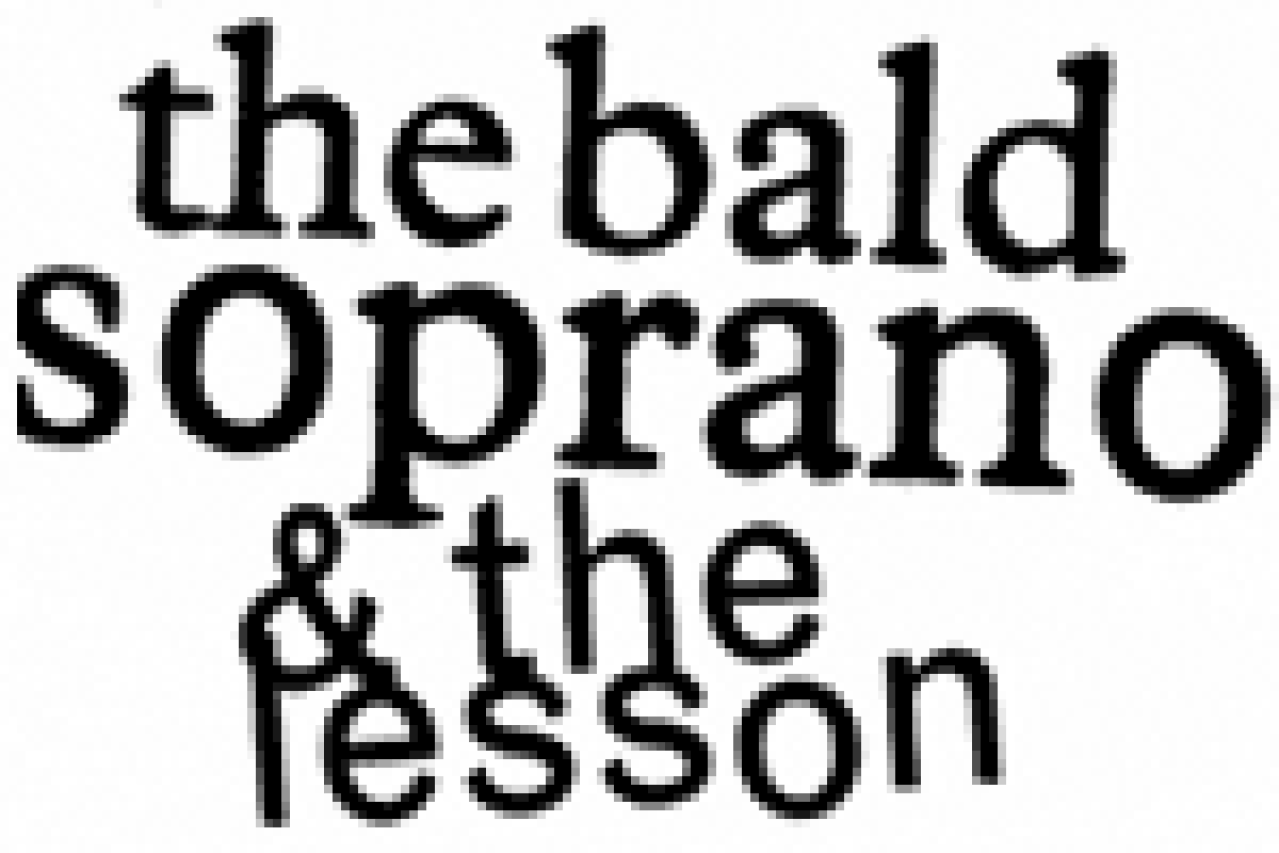The Bald Soprano & The Lesson

Seana Kofoed, and Robert Stanton in "The Bald Soprano"
(Photo © Carol Rosegg)
A clock strikes 17 times, heralding the beginning of an evening of absurdist theater. In the Atlantic Theater Company’s season opener, two one-act plays by Eugene Ionesco are paired together and performed in new translations by acclaimed playwright Tina Howe. Directed by Carl Forsman, this production of The Bald Soprano & The Lesson adroitly grounds Ionesco’s often nonsensical turns of phrases and all too frequent contradictions of language in a viable reality.
As “The Bald Soprano” opens, Mrs. Smith (Jan Maxwell) is darning a sock while chattering away to her husband. Mr. Smith (Michael Countryman) sits reading a newspaper, occasionally making a clicking noise with his tongue. Immediately, the pattern of non-communication between the couple is established — and it’s clear that, even if she were making perfect sense (which she is not), he’s only half-listening at best. When Mr. Smith finally engages his wife in actual dialogue, it’s to dispute one of her claims. Both Maxwell and Countryman play up the subtext of marital animosity that underlies their characters’ more genteel surface conversation, often to brilliantly comic effect.
Mr. and Mrs. Martin (Robert Stanton and Seana Kofoed) drop by to add further merriment and confusion to the proceedings. If the Smiths have troubles communicating, it’s nothing compared to the Martins, who don’t even seem to recognize each other. “How baffling and so bizarre,” they keep saying as they trace a path of circumstantial evidence — including sitting across from each other on the train, residing in the same building, and sleeping in the same bed — to conclude that they are husband and wife. Stanton and Kofoed are hilarious as they work their way through the twists and turns of their reasoning, conveying the couple’s confusion and hopefulness as much through body language as through words. In one of the most delightful sequences of the evening, they perform a rather bizarre dance of hesitant movements and near connections as the clock strikes repeatedly.
When the two couples sit down to converse, the strain of finding something to talk about is apparent. Maxwell is particularly droll in this sequence, her lip quavering in a vain attempt to formulate a sentence. For a while, the four focus on the unexpected arrival of the Fire Captain (John Ellison Conlee), but eventually they are left to themselves once again. As the play progresses, words and phrases spoken by the characters make less and less outward sense but the level of commitment by the actors to the words they speak only intensifies. Although “The Bald Soprano” is often considered a critique of the English bourgeoisie, and though the Atlantic cast members adopt faintly British accents, this production emphasizes more universal themes. The play comes across less as a social satire of a class-based society than as as a piece about domestic miscommunication.

(Photo © Carol Rosegg)
The second half of the evening continues the thematic motif of the breakdown of language. A professor (Steven Skybell) tutors his new student (Maggie Kiley) on the principles of arithmetic and, later, on the subject of philology. Rounding out the cast is Christa Scott-Reed as Marie, the maid; the actress has a strong, solid presence that makes a nice contrast to Skybell’s overwrought professor and Kiley’s eager-to-please student.
Forsman paces “The Lesson” at breakneck speed, with Skybell driving the action in a manic frenzy. At times, it seems too quick, and some of the humor of the piece is lost. Yet the production remains engaging. The director emphasizes the sexual undertones of the teacher-student relationship, and the play’s dark conclusion leaves little to the imagination in regard to this dynamic.
Loy Arcenas’s floral-heavy domestic interior for “The Bald Soprano” gives way to a more abstract vision for “The Lesson,” dominated by stacks of books. The different styles seem perfectly suited to the individual plays. Theresa Squire’s costumes, Josh Bradford’s lighting, and Obadiah Eaves’s sound design also work together to support the production.
Howe’s translations give Ionesco’s plays a contemporary feel and include a surprising amount of profanity. At the same time, Howe maintains the formality of the characters’ speech, particularly in “The Bald Soprano.” Since both plays are about language, this balance is crucial. The Atlantic’s production is well-served by the vibrancy of Howe’s work.











